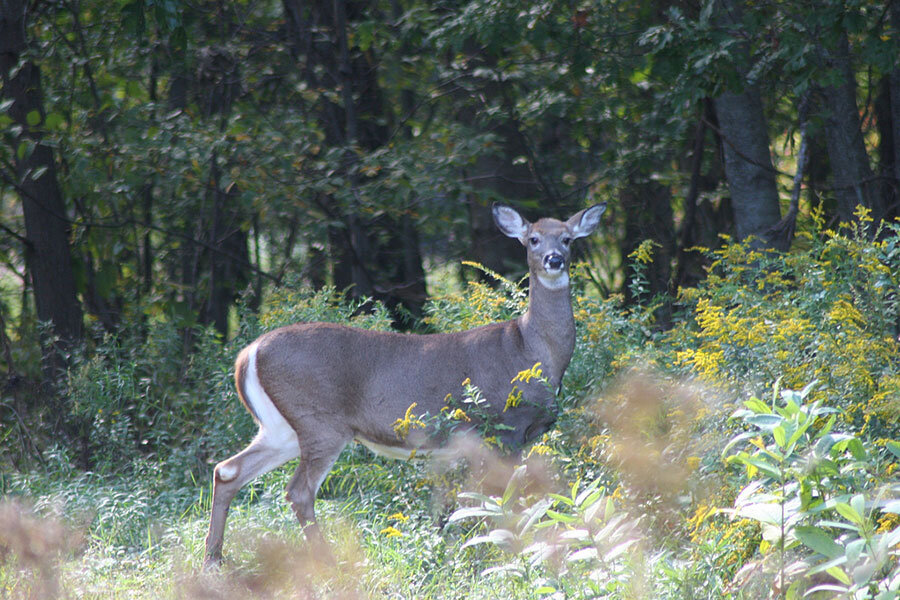Back from the brink: Endangered deer subspecies downlisted
The Columbian white-tailed deer was first federally recognized as endangered in 1967, before the Endangered Species Act was even signed into law. And now, nearly half a century later, the animal is being held up as a conservation success story by the US Fish and Wildlife Service.
"Anytime you can take a species from the brink of extinction and save its future, then it's cause for celebration," Brent Lawrence, a spokesman for the US Fish and Wildlife Service, writes in an email to The Christian Science Monitor.
The Fish and Wildlife Service is expected to announce that the Columbian white-tailed deer, Odocoileus virginianus leucurus, is going to be downlisted from "endangered" to "threatened" during an event Thursday in Ridgefield, Wash.
Farming, logging, and other development that threatened their habitat devastated white-tailed deer populations across the United States in the early 20th century, says Mr. Lawrence. There were just about 450 Columbian white-tailed deer in their range along the Columbia River in Washington and Oregon when the subspecies was first listed as endangered nearly 50 years ago. Today, the population has more than doubled.
Although white-tailed deer roam across North America, there are distinct subspecies separated by geographical barriers such as mountains. And the Columbian white-tailed deer is the only one of these groups found west of the Cascade mountains.
There, it is not only an important prey animal for predators like mountain lions, bears, coyotes, and bobcats, but the Columbian white-tailed deer also is culturally significant to the Cowlitz Indian Tribe.
As such, "this was only a success because of collaborative conservation. It took the combined efforts of the Cowlitz Indian Tribe, states of Washington and Oregon, many volunteers and the Service working together for many years to turn the tide for this deer," Lawrence says.
"The Columbian white-tailed deer is a great example of what it takes to recover an endangered animal," says Michael Bean, Principal Deputy Assistant Secretary for Fish and Wildlife and Parks at the Department of the Interior. "Without the work of the Cowlitz Indian Tribe, the states of Washington and Oregon, and many other partners and volunteers, these deer would not be trending toward a bright future."
Part of these efforts was the establishment of the Julia Butler Hansen National Wildlife Refuge for the Columbian White-tailed Deer in 1971. The refuge has over 6,000 acres of protected land along the Columbia River.
But in 2013, a faulty levee threatened to put much of the refuge under several feet of water. To save the deer, 88 of the animals were tranquilized and moved to a nearby refuge, the Ridgefield National Wildlife Refuge.
The effort took three years and hundreds of volunteers and staff, but the Fish and Wildlife Service expects the relocated population and the now-diminished Julia Butler Hansen National Wildlife Refuge population to soon be secure and viable.
Other subpopulations on Tenasillahe Island and Puget Island are already viable and secure, Lawrence says.
"Hopefully, we'll be talking about delisting the species due to recovery at some point in the near future," he says.







